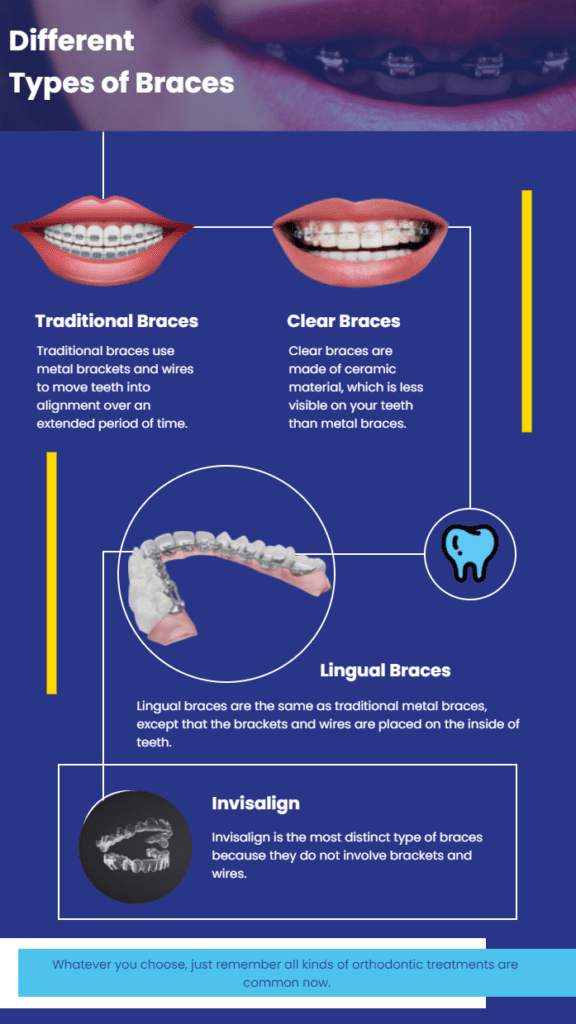How Cumming Orthodontics Can Change Your Smile with Invisalign and Braces
How Cumming Orthodontics Can Change Your Smile with Invisalign and Braces
Blog Article
Comprehensive Guide to Orthodontics Procedures for Remedying Oral Misalignments
In the realm of orthodontics, the trip to attaining a perfectly lined up smile entails a myriad of treatments tailored to fix oral imbalances. From typical braces to unnoticeable aligners and also medical options, the field of orthodontics provides an array of remedies to attend to differing degrees of dental irregularities. Comprehending the details of each procedure, including their mechanisms, benefits, and potential drawbacks, is important in making notified choices regarding one's orthodontic therapy. As we browse with the detailed overview to orthodontic treatments for remedying oral imbalances, the complex information of each technique will unfold, shedding light on the path toward a useful and unified oral positioning.
Orthodontic Procedures Overview

Routine modifications and surveillance are critical parts of orthodontic treatment to guarantee development is on track and to make any type of needed alterations along the means. By undergoing orthodontic procedures, patients can not only achieve a straighter smile but also improve their overall oral health and function.
Traditional Braces: How They Function
When taking into consideration orthodontic treatments for oral misalignments, conventional dental braces stand out as a time-tested technique for dealing with teeth positioning. Standard dental braces consist of brackets, cords, and bands that function together to apply continual stress on the teeth, gradually relocating them right into the desired alignment.
As pressure is applied to the teeth via the braces, the bone bordering the teeth is reshaped to support the new tooth positions. Individuals will certainly require routine modifications at the orthodontist's office to guarantee the braces proceed to apply the correct stress for effective teeth movement.
Unnoticeable Aligners: Disadvantages and pros
Unseen aligners supply a very discreet and practical option to typical braces for dealing with oral misalignments. These clear, personalized trays are basically invisible when worn, making them an appealing choice for people seeking a much more cosmetically pleasing orthodontic therapy. One of the primary benefits of unnoticeable aligners is their removability, permitting easier upkeep of oral hygiene contrasted to traditional dental braces. Individuals can remove the aligners before click for more info eating or cleaning their teeth, minimizing the risk of food obtaining stuck in the device and streamlining the cleaning process.

Surgical Orthodontic Options
Surgical interventions in orthodontics existing viable choices for dealing with complicated dental imbalances that may not be successfully solved with traditional orthodontic therapies. While undetectable aligners and conventional braces can remedy many orthodontic concerns, specific cases need surgical treatment to attain ideal outcomes. Surgical orthodontic options are commonly advised for serious malocclusions, considerable jaw inconsistencies, and situations where the underlying bone framework requires modification to accomplish appropriate placement.
One typical medical orthodontic treatment is orthognathic surgical treatment, which involves repositioning the jaws to remedy useful concerns such as problem chewing or talking. This surgery is frequently carried out in collaboration with an orthodontist who helps align the teeth before and after the treatment. Surgical orthodontics may likewise involve procedures to expose affected teeth, remove excess periodontal tissue, or reshape the jawbone to produce an extra harmonious face account.
Before considering surgical orthodontic choices, clients undertake a comprehensive evaluation to establish the need and prospective benefits of such interventions. cumming braces. While surgical procedure might seem complicated, it can significantly improve both the feature and looks of the smile in instances where conventional orthodontic therapies anonymous drop short
Retainers and Post-Treatment Treatment

Failure to conform with post-treatment care instructions can result in regression, where the teeth gradually relocate back in the direction of their initial settings. Constant retainer wear, good oral health, find more and routine dental examinations are important for preserving the outcomes attained via orthodontic surgery and making certain the lasting security of the fixed oral positioning.
Verdict
In conclusion, orthodontic treatments provide various choices for remedying dental imbalances. Surgical orthodontic options are available for more severe imbalances. Generally, orthodontic treatments can properly improve dental health and aesthetic look.
As we navigate with the thorough overview to orthodontic procedures for correcting oral imbalances, the detailed details of each technique will unfold, shedding light on the course toward a useful and unified dental placement. - braces
One of the most typical orthodontic treatments is the use of dental braces, which consist of steel braces and wires that use gentle pressure to slowly shift teeth right into the wanted position.When taking into consideration orthodontic treatments for dental misalignments, standard dental braces stand out as a reliable method for remedying teeth positioning. Additionally, unseen aligners may not be appropriate for intricate orthodontic problems that call for more considerable teeth activity, as they are usually suggested for light to moderate cases. Retainers are tailor-made orthodontic devices developed to hold teeth in their fixed positions after the conclusion of orthodontic therapy.
Report this page